As mentioned in the other thread " Planning to buy a Navigator"the planning phase is now over and the bike is in my workshop.
According to the papers the bike was put off the road in 2004.
Initally the barrels and heads were missing but I bought some barrels in the UK and also some NOS heads are on the way from London.
The previous owner made a new wiring harness but with only two colours: red and blue- the first thing to throw out. He also changed the electric system to 12 volts and installed a Boyer ingnition. There is a Wipac rotor in the parts pile and a Lucas stator from a Commando, which does not quite fit onto the studs in the primary case. I also have a 6 Volt stator. Will have to find out how this goes together.
I already repositioned the rear fender which was mounted in a rather odd angle.
The gearbox mainshaft has a lot of play on the drive sprocket side, I guess the bearing is toast. What size do I need? It is the early type gearbox.
Attachments
IMG_20160805_163534886%20-449x800.jpg
IMG_20160807_165305354%20-800x449.
The seatpan looks not like…
- Log in to post comments
Not sure about the headlig…
Not sure about the headlight but I bought a remanufactured seat from Bantam John, it was about £100 I think, not perfect, I think it sits a bit high but seems to be well made, I think Leightons do them too.
dan
- Log in to post comments
Thanks Dan for the hint wi…
Thanks Dan for the hint with the seats.
This morning I opened up the gearbox housing to take a peek.
I found a broken kickstart return sping ( available) and a bent clutch lever spring (no 41325), not available.
Anybody can help me with this spring?
- Log in to post comments
On the electrical front we…
On the electrical front we have some answers. Yes to 12V and Boyer ignition but wiring needs to be in correct colours! Well at least the industries standardised colours from the mid 1960s. I do have on my web site some details for such a rewire, www.aoservices.co.uk If you click on the top right hand side orange Icon you will go to some pdf one of which covers the lightweights. The Navigator had two Wipac switches left and right of the speedo, The switches were identical even if the knobs were not. ie the ignition had a key initially but it appeared naf so was soon replaced with another light switch knob. There was also a steering lock on the top of the forks a la Atlas.Al O
- Log in to post comments
Thanks Alan, I will refer…
Thanks Alan, I will refer to your site when rewiring the Navigator.
I just got my NOS cylinder heads.. They are bare without any bushes or whatsoever.
I can take the whole things out of my Jubilee heads if still good.
Only the bushes for the spindle clamping pins won?t come out the Jubilee heads . I tried heat an tapping but no result. They aren?t even listed in the spares list.
Guess I will have made some new ones or anyone has another solution?
Attachments
img_20160812_093819972-449x800-jpg
- Log in to post comments
Previously Ulrich Hoffmann…
Previously Ulrich Hoffmann wrote:
â?the spindle clamping pinsâ?
What's that? Sorry I couldn't translate it into something meaningfull in German 
Fritz
- Log in to post comments
Sali Fritz! Es ist die Sch…
Sali Fritz!
Es ist die Schraube, die die Kipphebelwelle gegen verdrehen sichert.
Some British technical solutions are hard to translate in German,
we would have constructed things different...
Attachments
IMG_20160814_171358409_HDR%20-449x800.jpg
img_20160814_171307560-449x800
- Log in to post comments
Ah a bush for the tappet a…
Ah a bush for the tappet adjusters?! I have never looked at mine but would have thought they'd come out with heat.
- Log in to post comments
Hello Ulrich, To the best…
Hello Ulrich,
To the best of my knowledge there are no bushes fitted in the cylinder head. It is more likely that your Jubilee heads are early heads (1959 - 1963) and your new Navigator heads are later heads (1963 - on). I am fairly certain that the later head uses a larger diameter spindle clamping pin. I think the change occurred with the introduction of the Electra in 1963. So what you need are the later spindle clamping pins but I don't know if these are available so making some bushes might be the best solution.
Patrick
- Log in to post comments
The problem is the shoulde…
The problem is the shoulder on which to tap on with a drift
is almost not there, it is very thin, let?s say half a millimeter.
On the last pics you see the backside with larger diameter to act as a "washer" for the securing nut.
I will look for a suitable piece of tube and a small washer for the backside.
- Log in to post comments
Thanks Fritz, I have an or…
Thanks Fritz, I have an original one which I still in the box.
- Log in to post comments
Hi Uli, it will be nice fo…
Hi Uli, it will be nice for you to get the history/photos of your Navi - it has travelled quite a bit in it's time; from London to Belgium to Ravensburg in Southern Germany. Most Jubilees and Navigators seem to have been originally sold in the South and the Midlands of England/ around the Birmingham area; even in the North of England they were quite rare. I know of only one other Lightweight here in Ireland and I saw very few of them when I lived in North Yorkshire.
When you get your machine up and running keep to the country roads and it will be very pleasant to use - but it is definitely unsuited for use on the autobahnen; the trucks now are just too fast and it is a bit embarrassing to have to admit that a 44 tonne truck can out accelerate and out brake the little Norton !. So you have your Commando for the faster journeys.
Patrick
- Log in to post comments
Here is what the belgian o…
Here is what the belgian owner wrote me:
all the best and much fun with the little oneps make it rev ;I gave quite a few commandos on twistie roads a run for their money on it.
Round here there are many backroads to explore, also the Alps, Austria and Switzerland are in reach.
Speaking of history: In Great Britain a vehicle always has the same license number during it?s life, right ?
Is it possible to find out the number by the VIN number? My Commando was also first registered in England. It was delivered to Gus Kuhn in May 1970.
- Log in to post comments
Hi Uli, The best person to…
Hi Uli, The best person to give you some information on your bikes is the NOC Records Officer - he has access to original factory records and can verify frame and engine numbers for you .
The Driver & Vehicle Licensing Agency (DVLA) can supply information about the previous history of a vehicle but I think they keep their records only by reference to the Registration Number (License Number in US English). Most vehicles keep their original Registration Number BUT numbers can be legally transferred from one vehicle to another - known as cherished or personal numbers. They can be bought and sold and can fetch enormous sums of money - especially old numbers from the sixties and earlier. So your original number could have been transferred to someone's Porsche or Ferrari if it was a 'desirable number' Eg UH 1 could possibly fetch GBP100,000 at an auction sale ! 25 O was sold a while back for over GBP500,000 - sold to the owner of a Ferrari 250GTO !
Patrick.
- Log in to post comments
Early Christmas presents!…
Early Christmas presents!
Part No 24187 spindle clamping pin is available again!
Freshly turned clamping bolts for your Lightweight cylinder heads.
It is the bigger 1/4 inch version. Dan Field send me one as a pattern and friend of mine who owns a machine shop turned them on his CNC lathe / grinder whatever..
As mentioned the heads an barrels were missing on my Navigator. I got NOS heads from Russell Motors in London. There were some Jubilee heads in the parts pile which had the smaller clamping bolts. For testing I stuck in a rocker spindle from the Jubilee heads and the clamping bolt Dan sent me. It did not fit. The circumfence of the radiused part of the excentric rocker bolt was a bit too large. The new clamping bolts now fit because of a larger radius of the cut out part. See pics.
If anyone is interested in the clamping bolts I can have more made because the part is now saved as a file in the CNC machine.
A set of for is about 25 Euros with self locking nuts 1/4 x28 UNF
plus postage
Attachments
IMG_20161214_191522733%20-629x800.jpg
IMG_20161214_191549003%20-449x800.
- Log in to post comments
I also got a parcel from t…
I also got a parcel from the NOC shop with new fork legs.
I polished the fork sliders and mounted new sealings and bushes.
More polishing on the aluminium tank bagdes. I made a cardboard pattern because the holes for the fixing screws on the right side badge were not drilled correctly. One hole had to be welded shut . The other is coverd by the rubber part.
Attachments
IMG_20161214_124951992%20-800x402.jpg
IMG_20161214_124957822%20-800x359.
- Log in to post comments
Previously Ulrich Hoffmann…
Previously Ulrich Hoffmann wrote:
More polishing on the aluminium tank bagdes.
Hi Ulrich,
You have been busy !. Where did you get the ALUMINIUM tank badges? The original Norton made badge was made from mazak -a poor quality metal, also called monkey metal- and was chromed. Because of the poor quality of the base metal original badges are usually quite badly pitted.
Way back -20 years ago or maybe more- NOC had some badges made in aluminium which I thought was a good idea. When they were polished up they looked superb.
Patrick
- Log in to post comments
They were on the bike. May…
They were on the bike.
Maybe these are some of the NOC badges?
- Log in to post comments
Armours sent me the exhaus…
Armours sent me the exhaust pipes for the Navigator.
They are a tight fit inside the cylinder heads.
Today I got my tank back . Tons of bondo putty and filler !
The inside is clean now, the tank liner is gone.
Aftersome very dusty minutes with an angle grinder, the
putty was removed and surprisingly no dents showed up!
I was prepared for the worst.
But one problem came up: the front left screwhole is leaking.
I can stick a small rod right through. What can be done about that?
Attachments
NavigatorTank1%20-800x447.jpg
NavigatorTank2.jpg
www.nortonowne
- Log in to post comments
Hi Ulrich, I don't know a…
Hi Ulrich, I don't know any easy way of curing the leaking screwhole. Maybe a local radiator repair shop could sort it out properly.
Are you happy with your Armour's pipes? I see they still have their own shape where they join to the silencer. Best bet is normally to re-chrome a good set of original pipes if you can get a firm to do the job; most re-chromers won't take on the job as they say that dirty exhaust pipes destroy their chemicals.
Frohe Weihnachten und ein gutes Neues Jahr.
- Log in to post comments
Previously patrick_mullen…
Previously patrick_mullen wrote:
Hello Ulrich,
To the best of my knowledge there are no bushes fitted in the cylinder head. It is more likely that your Jubilee heads are early heads (1959 - 1963) and your new Navigator heads are later heads (1963 - on). I am fairly certain that the later head uses a larger diameter spindle clamping pin. I think the change occurred with the introduction of the Electra in 1963. So what you need are the later spindle clamping pins but I don't know if these are available so making some bushes might be the best solution.
Patrick
Hello Patrick!
Both pair of heads are the early spigot type heads because I also have the matching barrels to it.
Attachments
img_20160813_074406205-449x800-jpg
- Log in to post comments
I found a way to cure the…
I found a way to cure the leaking screw hole. A friend of mine turned a new piece on his lathe which we welded in the tank. The old leaking threaded sleeve was drilled out.
Patrick, the Armours pipes are ok, but fit into the cylinder head is very tight.
I did not test the fit into the silencers yet.
I had to order these because I only had one of the old pipes .
What do you guys think of that mudguard? Is it close to an original Navigator front fender?
http://www.ebay.de/itm/252704029471?_trksid=p2060353.m1438.l2648&ssPageName=STRK%3AMEBIDX%3AIT
Attachments
IMG_20170104_144526490_HDR%20-449x800.jpg
img_20170104_141706892_hdr-449x8
- Log in to post comments
Hi Ulrich, The mudguard lo…
Hi Ulrich, The mudguard look pretty similar, certainly better than nothing!
Which leaking screw were you fixing?!
Dan
- Log in to post comments
Hi Dan! It was the front l…
Hi Dan!
It was the front left hand screw hole in the tank for the Norton badges.
Did you get the clamping bolts?
- Log in to post comments
Hi Ulrick, Yes the bolts a…
Hi Ulrick,
Yes the bolts arrived just before Christmas, nice job, thank you! Looks like an email went astray ... Hopefully you got the money ok?
My tank has the holes filled and a Norton transfer fitted, but if I ever do the Navigator I may have the same problem!
Dan
- Log in to post comments
The mudguard seems to be g…
The mudguard seems to be good value as it includes the fixing bracket and delivery but you might have to pay import tax and VAT . Also the early(1961) Navigator/Slimline Dominator had 7" wide fork yokes and later models (1964 on)had the wider 7.3/8" yokes - so you really need to confirm that this mudguard will fit your forks correctly. They don't seem to mention this in the ad. - in fact they seem to say that it fits slimline Dominators from the fifties !
That's a nice bit of work you've put in on the tank repair.
Patrick
- Log in to post comments
What tyre size do you ride…
What tyre size do you ride on your Navigators?
On my front wheel is mounted a Dunlop K81 TT 4.10x19
A bid wide?
According to the German title I am allowed mount 3.00x19 or 3.60x19 .
- Log in to post comments
3.00 x 19 on front; 3.25 x…
3.00 x 19 on front; 3.25 x 18 on back.
I think you can go up one size wider to 3.25 x19 on front and 3.50 x 18 on the back but the 3.25 x 19 might be too wide - it depends on the mudguard mounting bracket. Your 4.10 is definitely too wide to fit the early forks (7" size).
- Log in to post comments
Oh just in case it isn't…
Oh just in case it isn't obvious 3.00 x 19 is approx. the same size (width) as 3.60 x 19. - just two different measurement systems used. 4.10 x 19 is something like 3.75 x 19 in old English.
- Log in to post comments
Thanks for that explanatio…
Thanks for that explanation.
But what size do you actually ride on your bikes?
- Log in to post comments
I use Avon Speedmaster Mk1…
I use Avon Speedmaster Mk11 3.00 x 19 on both the Standard and De Luxe front ; Dunlop Gold Seal 3.50 x 18 on the Standard rear wheel and a Mitas 3.25 x 18 on the De Luxe rear wheel.
- Log in to post comments
Hi Ulrich, That's good ne…
Hi Ulrich,
That's good news that your new heads and barrels are matching spigot types. It is highly likely that the change in diameter of the spindle clamping pins occurred earlier than the change to the non-spigot heads/barrels. I have had a look at a 1959/60 Jubilee head on my bench and I do not see any bush. I have the Norton Spare Parts Lists for 1959 and 1961/62 and no bush is shown there - but both lists give the same part number for the 'spindle clamping pin'. I haven't got any later lists to check the part number for the later pin.
I have 2 Jubilees -1959 De Luxe and 1961 Standard- and 2 Navigators - a De Luxe and a Standard -both 1961. It is amazing how they differ in minor details. You asked about the steering lock; early Navigators and Jubilees didn't have steering locks but later models (about 1964 ?) did have.
Anyway the best of luck with your rebuild.
Patrick
- Log in to post comments
My German perfectionism ca…
My German perfectionism caused a big problem: I gave away the right hand tank badge for welding shut a mismatched hole an the rear end of the badge. It worked fine before at the middle hole but this time the rear end melted away! The guy is trying to restore the original shape. I hope for the best. Will take a lot of grinding and polishing. I that fails I am looking for another badge. Luckily my badges are made of aluminium, obviously made as a repop by the NOC. If someone has a surplus one...
- Log in to post comments
I test fitted the exhaust…
I test fitted the exhaust system today yet without barrels and cylinder heads. After I swapped the footrest spacers I got a nice fit on the left side. The brake pedal just clears the pipe and muffler. Maybe I make new exhaust hangers to get the muffler a bit back to have more room for the brake pedal to move.
On the right side I noticed the hole in the pipe bracket i too large and slides over the footrest spacer: I guess normally the bracket is trapped and fixed beteen the spacer and the footrest?
Attachments
bracket%20right.jpg
bracket-left-800x449-jpg
www.nortonownerscl
- Log in to post comments
Hi Ulrich, I resorted to a…
Hi Ulrich,
I resorted to a pair of stainless steel washers either side of the exhaust mounting lug. Inner diameter to slip over the hexagon footrest bar. Outer diameter to cover the hole in the exhaust bracket.
Maynot help on the left hand side where clearance with brake pedal is a problem.
The original Norton exhausts were made to finer tolerance and had a vertical slot in the mount, not a VERY generous hole.
Peter
- Log in to post comments
Finally I got my resleeved…
Finally I got my resleeved cylinder back from the engine shop! Today a letter with urgently needed parts arrived from the NOC shop. I broke an oil ring on the piston at my first attempt to mount them on the rods. Also a valve collet was missing.
So I could install the last valve in the head.
The heads with all internals and new clampng pins on the valve adusters.
Next was slipping the barrels over the pistons.
I secured the cam followers with pieces cut from an oil hose .
Done!
Next was fixing the heads.
Valve caps need to be polished.
And the carb installed just for the looks..
- Log in to post comments
Uli, that will look much b…
Uli, that will look much better when it's covered in oil! I'm looking forward to the finished article!
- Log in to post comments
Hi Uli, That is clean ! I…
Hi Uli, That is clean ! I think your carb or at least the float side cover is not the original - the writing (AMAL) should be horizontal. This won't make any difference to the engine running but you are such a perfectionist.
I notice the use of secret German precision engineering - there's a club hammer in one of your pictures! I'm keeping a blanket over my Navigator in case anyone should see it and all it's mismatched bits.
- Log in to post comments
Previously Ulrich Hoffmann…
Previously Ulrich Hoffmann wrote:
Finally I got my resleeved cylinder back from the engine shop! Today a letter with urgently needed parts arrived from the NOC shop. I broke an oil ring on the piston at my first attempt to mount them on the rods. Also a valve collet was missing.
So I could install the last valve in the head.
The heads with all internals and new clampng pins on the valve adusters.
Next was slipping the barrels over the pistons.
I secured the cam followers with pieces cut from an oil hose .
Done!
Next was fixing the heads.
Valve caps need to be polished.
And the carb installed just for the looks..
Look stunning Ulrich, I wish I had kept a record like yours, but then I would not have produced such a splendid bike. Sunny days only?
- Log in to post comments
Previously patrick_mullen…
Previously patrick_mullen wrote:
Hi Uli, That is clean ! I think your carb or at least the float side cover is not the original - the writing (AMAL) should be horizontal. This won't make any difference to the engine running but you are such a perfectionist.
I notice the use of secret German precision engineering - there's a club hammer in one of your pictures! I'm keeping a blanket over my Navigator in case anyone should see it and all it's mismatched bits.
Patrick, the bike is far from perfect! And you don?t have to cover your bikes anyway!
I used the Norton-Adjuster (club hammer..) to make the headsteady fit to the frame...
I have two carbs for the bike, will have a look if the other cover is correct with the Amal logo.
@ Dan: Is the engine really such an oily mess when running?
I already used some extra sealing compound around the cam holes..The heads are not torqued down yet.. The headers will also use some adjusting...
- Log in to post comments
Hi Uli, no I'm just teasi…
Hi Uli, no I'm just teasing ...... the oil all goes on the floor! 
- Log in to post comments
This morning I tourqed dow…
This morning I tourqed down the heads and set the valve clearances. Now it?s time for timing...
As I have a Boyer ignition I will set advanced timing at 32? just as on my Commando? The black Boyer box MK III is the same.
What goes into these threaded holes on top of the rocker spindle "towers"?
A plug or nothing?
And yes! there is enough clearance between the claping pin an the rocker arm, it?s just the angle of the camera!
- Log in to post comments
You?re right Patrick, ther…
You?re right Patrick, there are no bushes in these holes.
There was only a shiny area where the nut of the clamping bolt
polished the side of the cast part which I took for a pressed in bush.
There are two part numbers for the spindle clamping bolt:
#20849 in the early list
and #24187 in the later 64 list.
So I guess the diameter was changed from 4,63mm to 6,33 mm.
Solution A: Use the original screws with a selfmade bushes and a larger washer for the nuts
Solution B : get bigger hexagon screws and file flat the head on one side towards the bolt to match the original one.
- Log in to post comments
Previously Ulrich Hoffmann…
Previously Ulrich Hoffmann wrote:
This morning I tourqed down the heads and set the valve clearances. Now it?s time for timing...
As I have a Boyer ignition I will set advanced timing at 32? just as on my Commando? The black Boyer box MK III is the same.
What goes into these threaded holes on top of the rocker spindle "towers"?
A plug or nothing?
And yes! there is enough clearance between the claping pin an the rocker arm, it?s just the angle of the camera!
Shouldn't the be capped off with a blanking screw as they are the oilways I think, I left mine in but can see why they might be removed for cleaning. Might be wrong though..
- Log in to post comments
Hi Uli, The Maintenance Ma…
Hi Uli,
The Maintenance Manual I have doesn't give the ignition timing for the Navigator. It quotes 32 degrees for the Jubilee but I am fairly certain that the correct timing for the Navigator is actually 24 degrees. Maybe somebody else can confirm this .
The rocker spindle tower should have a blanking screw - it definitely has on mine anyway.
- Log in to post comments
This is what Boyer LDT wro…
This is what Boyer LDT wrote me:
Thank you for your enquiry, the 26 degrees I would think is wrong, you want it as advanved as you can without it kicking back or pinking.Its more likely to be in the range of 30 to 40 deg. Regards Tech Dept.
- Log in to post comments
I personally advanced the…
I personally advanced the timing on my Navigator until it sounded right - (I never did check exactly what it is now set at) - as I found the original quoted figure was retarded and blued the exhaust pipes. It is good to know that Boyer actually agree with advancing the timing - it makes the engine much more responsive and I do not have any kicking back or pinking.
The 32 degrees quoted for the Jubilee (and the Commando) sounds much nearer the mark, BUT be a little bit cautious as back "in the day" the Jubilee had a reputation for destroying pistons if the timing was too advanced.
- Log in to post comments
A year on and 5 pages of r…
A year on and 5 pages of replies. Time to start a new thread, methinks.
- Log in to post comments
I've just checked my stas…
I've just checked my stash of Jubilee cylinder heads, I have heads with both sizes of clamping bolt, but looking at my bottom 2 pictures I wonder if Ulrich is talking about the rocker spindle bush?
- Log in to post comments
Hi Dan, Yes I would agree…
Hi Dan,
Yes I would agree with your bottom two photos as well. Ulrich quoted the part number as 20849 for the early 'spindle clamping pin'which agrees to the 1959/1961 Spare Parts Lists. This phrase "spindle clamping pin" is how Norton phrased it in the original Spare Parts List. It is simply the clamping bolt.
Apparently there was a reason why Norton uprated the clamping bolt to the quarter inch size ; if the Jubilee engine was regularly taken up to valve bounce- around 9000 rpm- the original bolt could slacken off and the push rod could jump off the ball of the rocker. I presume that Norton had quite a few warranty claims for damaged engines. It has happened to me but strangely enough nothing in the engine actually broke !. I could ride the bike home on the one working cylinder and simply readjusted the tappets, relocked the clamping bolt and all was well.
Patrick
- Log in to post comments




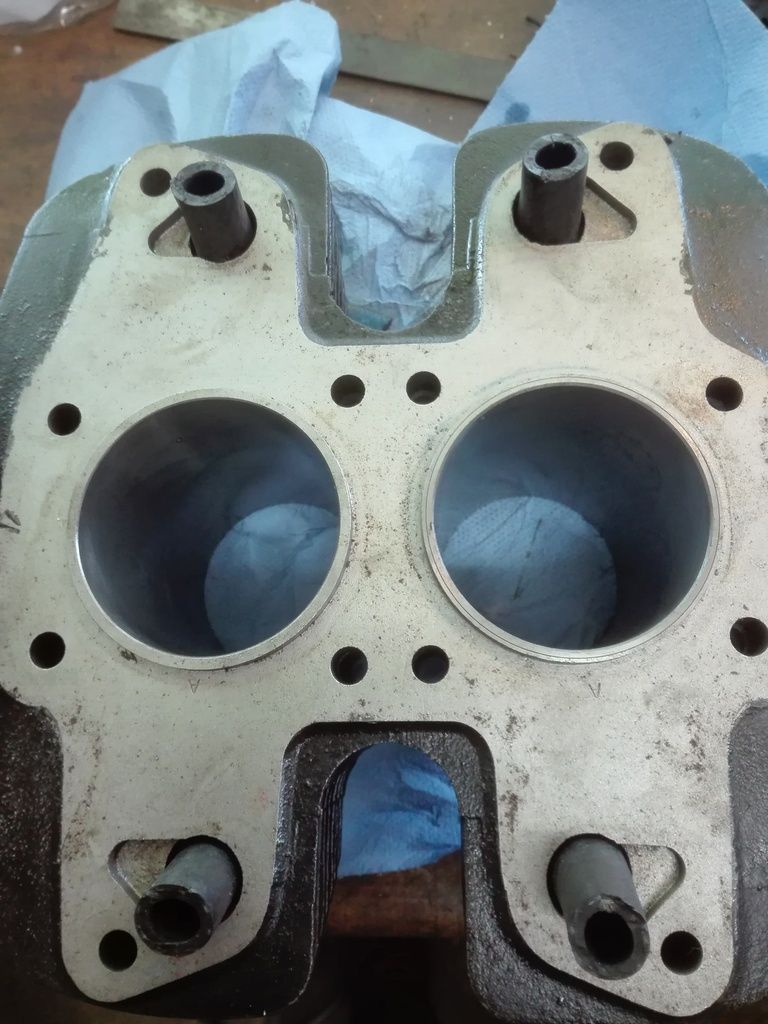



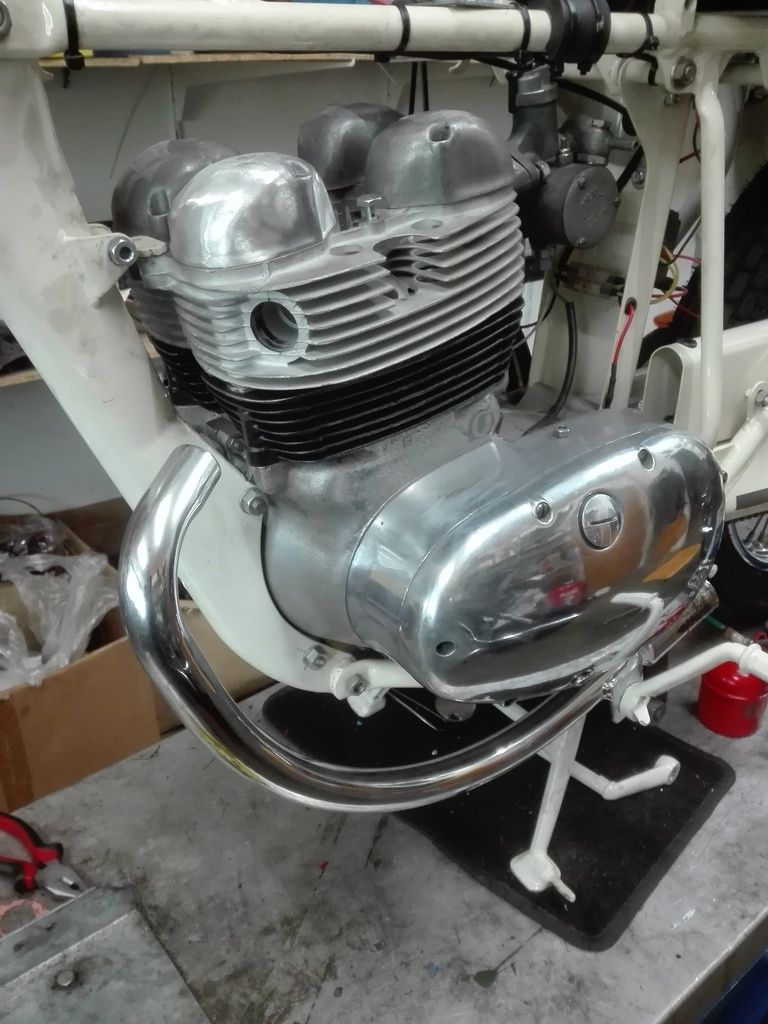
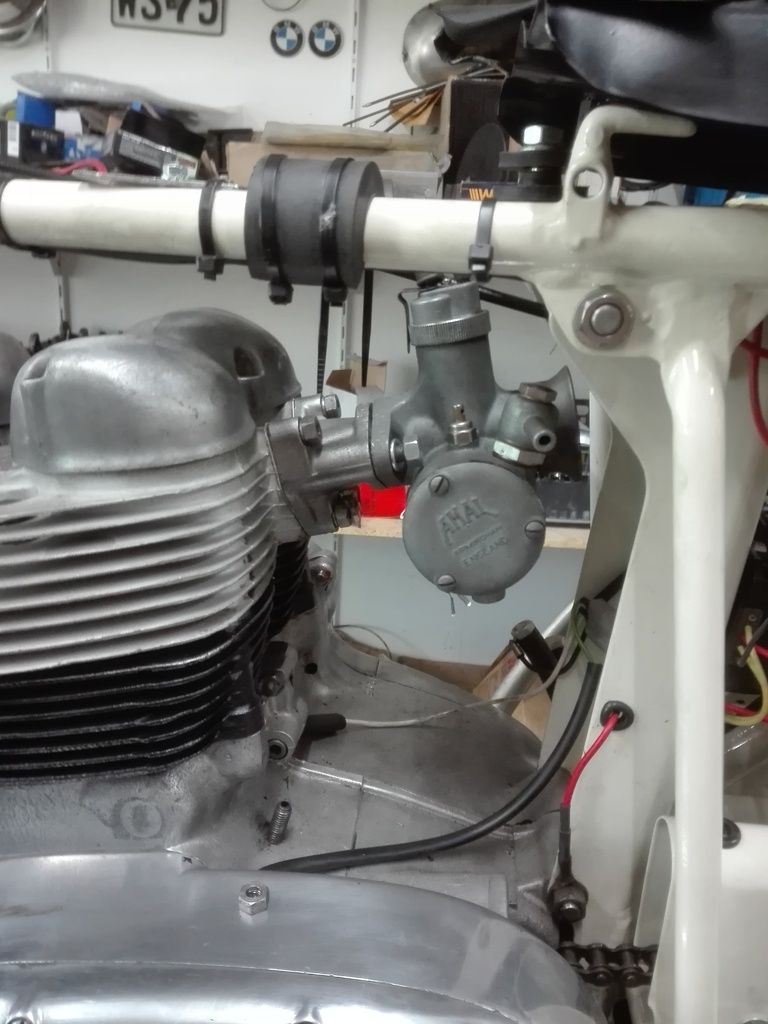

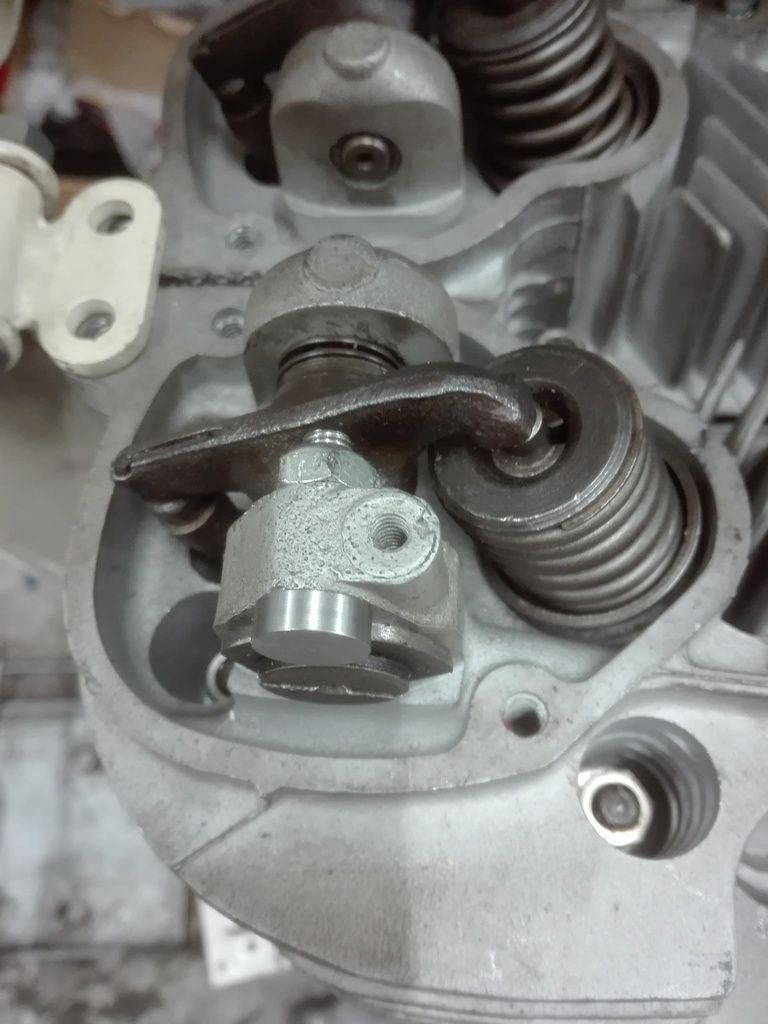
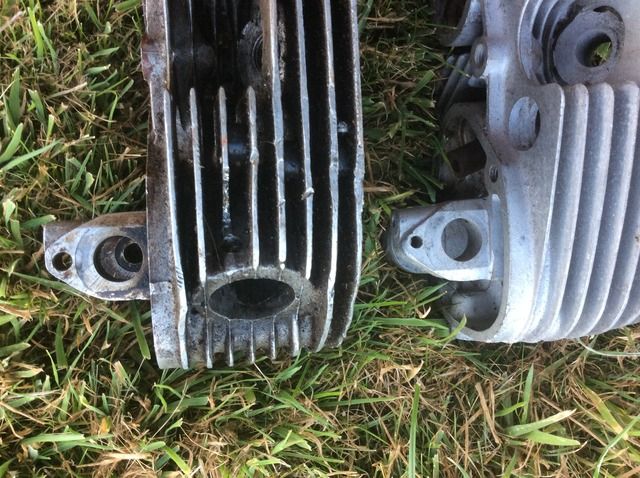
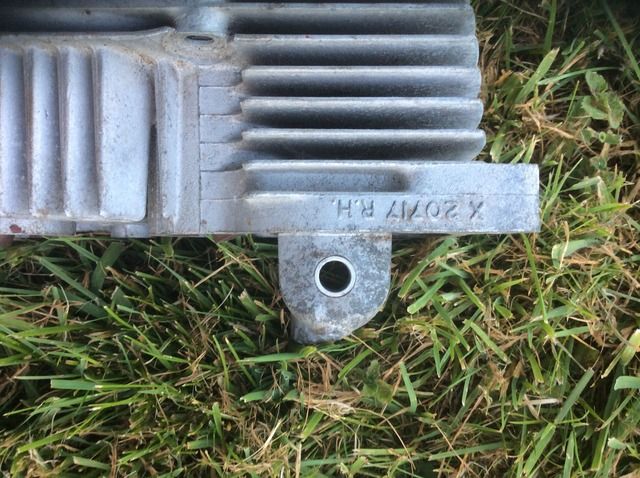
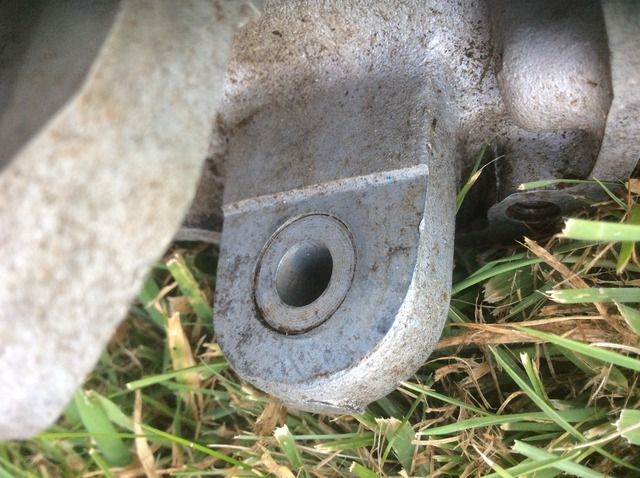



The seatpan looks not like an original one.
There is an additional hole in the headlamp shell where an ignition lock was located. Did the Navigator have a lock at all?
Attachments
IMG_20160803_154209436_HDR%20-449x800.0.jpg
IMG_20160803_154209436_HDR%2